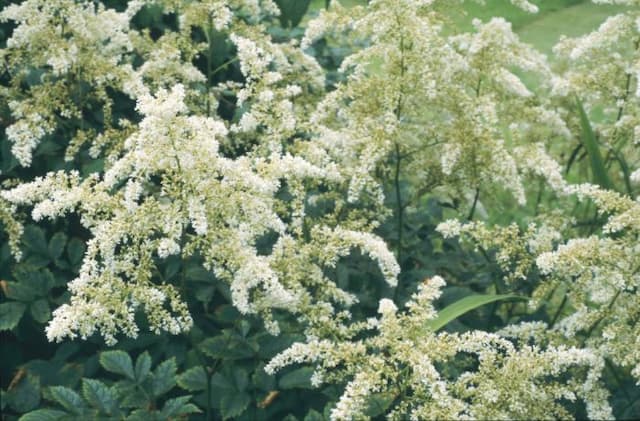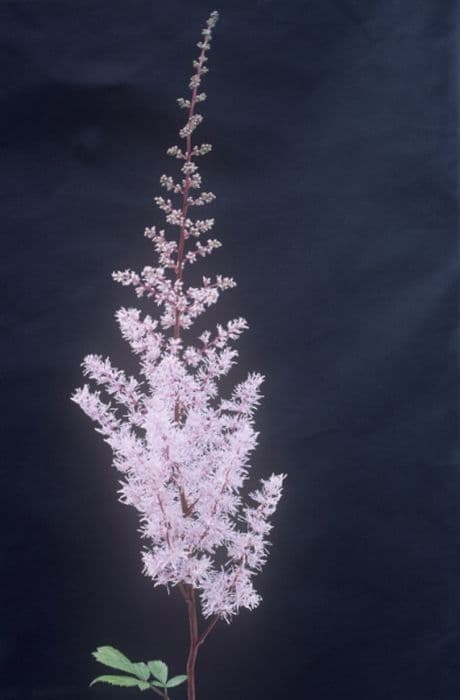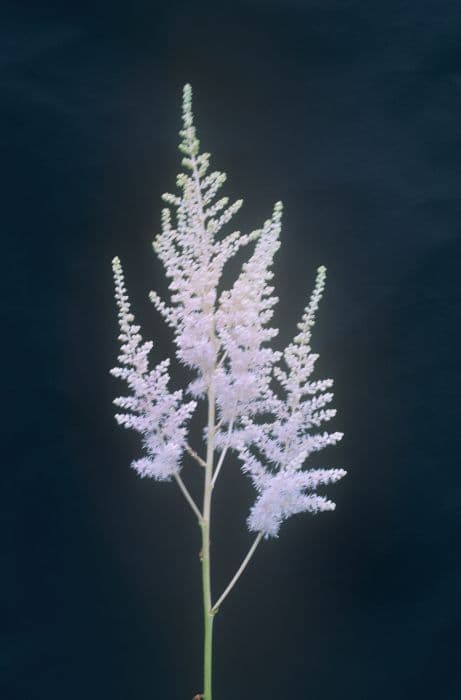Coral Bells Heuchera 'Lime Marmalade'

ABOUT
Heuchera 'Lime Marmalade' is a vibrant, ornamental perennial that is known for its eye-catching foliage. The leaves of this variety display a bright, lime-green color that offers a bold contrast to darker plants in a garden. The foliage has a ruffled texture, adding a dimension of tactile interest with each leaf exhibiting a somewhat rounded, lobed shape that can resemble the foliage of a maple tree in miniature. Over time, the plant forms a dense, mounding clump of these radiant leaves. As the seasons change, the lime-green leaves of the 'Lime Marmalade' can take on different hues, with the possibility of acquiring a golden or amber tint depending on the light exposure and the time of year. The edges of the leaves may be fringed or slightly wavy, adding to the ornate character of the plant. In addition to its striking leaves, Heuchera 'Lime Marmalade' produces delicate stems that rise above the foliage clump, and during the blooming season, small, bell-shaped flowers appear. These blossoms are typically of a lighter, more subdued hue, often white or pale pink, and form loose clusters along the vertical stems. The subtle flowers offer a soft visual contrast with the exuberant leaf color and can attract a range of pollinators to the garden. Overall, Heuchera 'Lime Marmalade' is highly prized for its unique foliage that provides continuous visual interest from spring through to fall, and with its ability to fit well within a variety of garden compositions thanks to its vivid color and pleasing texture.
About this plant
 Names
NamesFamily
Saxifragaceae
Synonyms
Coral Bells, Alumroot
Common names
Heuchera 'Lime Marmalade'.
 Toxicity
ToxicityTo humans
The Coral Bells, including the Heuchera 'Lime Marmalade', are generally considered non-toxic to humans. Therefore, accidental ingestion of this plant typically does not result in poisoning or serious side effects. However, it is always advisable to avoid eating ornamental plants as they are not intended for consumption.
To pets
The Coral Bells, such as the Heuchera 'Lime Marmalade', are generally recognized as non-toxic to pets. This means that if pets like cats or dogs inadvertently consume small amounts of this plant, they are unlikely to experience poisoning or severe health issues. However, as with humans, it is not recommended for pets to eat ornamental plants.
 Characteristics
CharacteristicsLife cycle
Perennials
Foliage type
Evergreen
Color of leaves
Lime green
Flower color
White
Height
1-2 feet (30-60 cm)
Spread
1-2 feet (30-60 cm)
Plant type
Herb
Hardiness zones
4-9
Native area
North America
Benefits
 General Benefits
General Benefits- Aesthetic Appeal: The Heuchera 'Lime Marmalade' has vibrant lime-green foliage that adds a pop of color to any garden.
- Shade Tolerance: This particular cultivar thrives in shady conditions where other plants may not grow as well.
- Drought Resistance: Once established, it has a moderate tolerance for drought, making it suitable for low-water gardens.
- Seasonal Interest: It offers year-round interest due to evergreen or semi-evergreen foliage in milder climates.
- Soil Versatility: The plant can adapt to a range of soil types, from clay to sandy soils, provided they are well-draining.
- Erosion Control: The Heuchera 'Lime Marmalade' can help prevent soil erosion in sloped areas of the garden.
- Low Maintenance: It requires minimal care once established, needing only occasional watering and trimming.
- Attracts Pollinators: While the blooms are not the main attraction, they can still attract hummingbirds and butterflies.
- Deer and Rabbit Resistance: The plant is less palatable to deer and rabbits, making it a good choice for pest-prone areas.
- Non-Invasive: Unlike some garden plants, Heuchera 'Lime Marmalade' is not aggressive and won’t take over the garden space.
 Medical Properties
Medical PropertiesThis plant is not used for medical purposes.
 Air-purifying Qualities
Air-purifying QualitiesThis plant is not specifically known for air purifying qualities.
 Other Uses
Other Uses- The leaves of Coral Bells can be used in floral arrangements to add a splash of chartreuse color and unique foliage texture.
- Coral Bells can act as a natural mulch, providing soil with organic matter as their leaves decompose.
- These plants can help reduce soil erosion on slopes due to their clumping growth habit which stabilizes the ground.
- Their colorful foliage can be used as a natural dye for fabrics, imparting subtle shades of green and yellow hues.
- Coral Bells are sometimes included in butterfly gardens as their flowers attract pollinators, contributing to the health of the local ecosystem.
- The plant can serve as a living edge or border to delineate different areas of the garden, creating a visual separation without the need for fencing.
- During wintertime, the evergreen varieties of Coral Bells provide color and interest to an otherwise dormant landscape.
- Some garden enthusiasts may use the dried out flower stalks of Coral Bells in arts and crafts for creating natural decorative elements.
- Coral Bells can be planted to signal soil pH; they generally prefer slightly acidic soil, and their health can indicate the need for pH amendments.
- Their robustness makes them suitable as a ground cover for areas where other plants might struggle, such as under trees with shallow roots.
Interesting Facts
 Feng Shui
Feng ShuiCoral Bells are not used in Feng Shui practice.
 Zodiac Sign Compitability
Zodiac Sign CompitabilityCoral Bells are not used in astrology practice.
 Plant Symbolism
Plant Symbolism- Eternal Beauty: The Heuchera 'Lime Marmalade', commonly known as Coral Bells, is often associated with eternal beauty due to its perennial nature and the long-lasting attractiveness of its foliage.
- Fascination: Its striking lime green foliage attracts attention and symbolizes a sense of fascination and captivation.
- Diversity: Coral Bells come in a variety of colors and forms, representing diversity and the embracing of differences.
 Water
WaterCoral Bells, or Heuchera 'Lime Marmalade', should be watered regularly to maintain moist but not waterlogged soil, particularly during the growing season. It's best to water them deeply once a week, allowing for about 1 gallon of water to reach the roots, depending on the size of the plant and the weather conditions. During hot, dry periods, more frequent watering may be necessary whereas, in cool, damp weather, less is required. It's important to avoid overhead watering to prevent disease, so water at the base of the plant. During the winter, reduce the amount of water to prevent root rot as the plant's growth slows down.
 Light
LightCoral Bells thrive in part shade to full sun, but the 'Lime Marmalade' variety performs best with morning sun and afternoon shade to protect its vibrant foliage. Ensure it's planted in a location where it receives at least 3 to 6 hours of sunlight daily. Direct, harsh afternoon sun should be avoided, as it can scorch the leaves, especially in hotter climates.
 Temperature
TemperatureCoral Bells are quite hardy and 'Lime Marmalade' can tolerate temperature extremes, surviving in USDA hardiness zones 4-9. They can generally handle temperatures as low as -30°F and as high as 80°F, but they thrive in temperatures between 60°F and 70°F. Providing mulch can help to regulate root temperature and protect the plant in both heat and cold.
 Pruning
PruningPruning Coral Bells helps to maintain their shape and encourage a healthy growth habit. Remove any dead or damaged leaves as needed throughout the year to keep the plant looking its best. In early spring, before the onset of new growth, cut back the entire plant to remove any old foliage and promote fresh, vibrant leaves. Pruning is generally done annually or whenever necessary to remove spent leaves.
 Cleaning
CleaningAs needed
 Soil
SoilCoral Bells 'Lime Marmalade' prefers well-draining soil rich in organic matter with a pH of about 6.0 to 7.0. An ideal soil mix could be one part garden soil, one part peat moss or compost, and one part perlite or coarse sand to facilitate drainage.
 Repotting
RepottingCoral Bells 'Lime Marmalade' generally need repotting every 3-4 years or when they outgrow their current container, to refresh the soil and allow for continued growth.
 Humidity & Misting
Humidity & MistingCoral Bells 'Lime Marmalade' thrive in average household humidity levels but can tolerate a range from 40 to 60 percent.
 Suitable locations
Suitable locationsIndoor
Keep in bright, indirect light; water when top soil feels dry.
Outdoor
Plant in partial shade; ensure soil is well-draining.
Hardiness zone
4-9 USDA
 Life cycle
Life cycleHeuchera 'Lime Marmalade', commonly known as Coral Bells, begins its life cycle with seed germination, occurring when conditions are moist and warm. The seedlings establish a rosette of leaves at the soil surface and develop a root system. After the rosettes mature, Coral Bells enter a vegetative state, characterized by the growth of the lime-green, ruffled foliage that is a hallmark of this cultivar. The plant eventually enters a reproductive phase, usually in late spring or early summer, producing tall, slender stalks with small bell-shaped flowers that attract pollinators. Once pollination takes place, seeds are produced, and after dispersal, the plant may go through a period of dormancy, especially in colder climates, retreating to the rosette stage and conserving energy for the next growing season. Over several seasons, the clumps of foliage expand as the plant grows, until it eventually needs division to rejuvenate and maintain vigor.
 Propogation
PropogationPropogation time
Spring-Early Summer
Heuchera 'Lime Marmalade', also known as Coral Bells, is commonly propagated by division. The best time to propagate Coral Bells by division is in the spring or fall when the plant is not in active bloom. To propagate, carefully dig up the entire plant, making sure to keep a substantial amount of roots intact. Gently separate the crowns by pulling or cutting through the root ball to create smaller plants, each with a portion of the root system. Replant these divisions immediately at the same depth they were originally growing, spacing them about 12 to 18 inches apart (30 to 46 centimeters) to allow for growth. Water the new plants thoroughly to help establish their roots. This method encourages healthy, vigorous new growth and can help to rejuvenate older, overcrowded clumps of Coral Bells.









